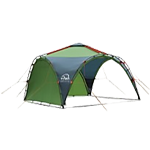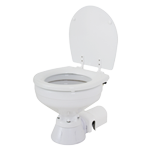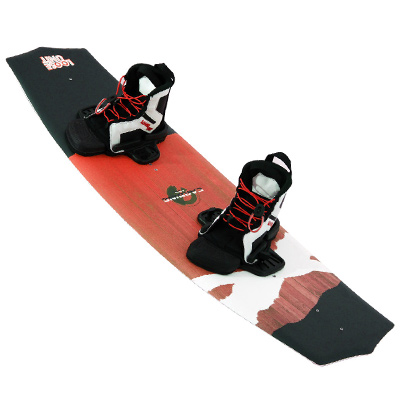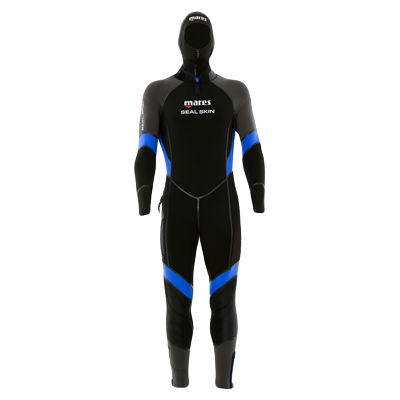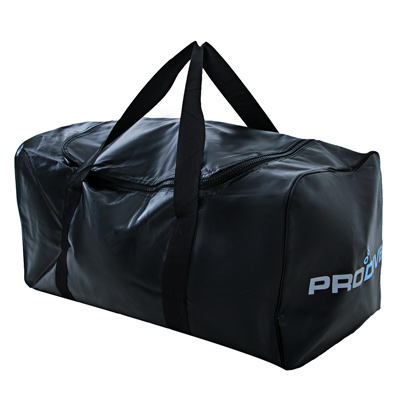-
Shop our Range
▼
- Deals & Promotions ►
-
Fishing
►
Featured Fishing Categories
-
Boating
►
Featured Boating Categories
-
Camping & Hiking
►
Featured Camping & Hiking Categories
-
Marine Electronics
►
Featured Marine Electronics Categories
-
RV & Motorhomes
►
Featured RV & Motorhomes Categories
-
Apparel
►
Featured Apparel Categories
-
Watersports
►
Featured Watersports Categories
-
Diving & Snorkeling
►
Featured Diving & Snorkeling Categories
-
Hunting
►
Featured Hunting Categories
- Cool Stuff ►
- Shop By Brand
-
How Can We Help You?
Give Us A Call 1800 154 713
Or get us to call you... request a call back
- Australia's Fastest Delivery with TGE Courier
- Free Delivery on orders over $199* Metro only. T&Cs Apply.
- Full Warranty And No Worries Returns We'll refund, repair or replace
- Insanely Easy Returns via ParcelPoint 1500+ locations Australia-wide
- Lowest Price Guarantee Find a lower price, we'll match it or we can do better!
- Massive Range 21,000+ products in stock ready to ship!
- AfterPay Shop Now. Pay Later.
Jigging
Rod & Reel Combos (36)
Reels (100)
Rods (70)
Jigs (90)
Landing Gear (5)
Braid (39)
Trace (11)
Hooks (34)
Terminal Tackle (11)
Tackle Boxes & Bags (22)
Tools (12)
Xtras (7)
Jigging is an effective and exhilarating way to target Kingfish, Hapuka and Blue Nose...
To get the consistent results however you do need to know what you’re doing.
We can target fish from 10-300m+ deep with relative ease. Jigging can be the preferred and most effective technique in greater depths.
With the use of braided lines and state of the art rods even the smallest bit of attention that jig receives is felt by the angler which in turn can result in the hook up and capture of that trophy fish that may have been missed if using a conventional fishing rod and monofilament line. Jigging is typically practised over deep reefs, pinnacles, drop offs and high current areas were you can expect to find large amounts of baitfish and predatory fish like the kingfish.
Jigging can be possible in extreme currents where only massive sinkers would suffice when using bait. This is made possible by the braided lines that are a crucial ingredient to successful jigging and streamlined jigs designed to plummet through current and into large depths quickly.
We would recommend jigging when kingfish can be seen on a fish finder and targeted at precise depths and locations. When your standard livebait rod and reel cannot make it to the bottom or through the current and whenever you find yourself in a position when you have found the target species you are after and cannot catch any livebaits or keep in contact with those baits you are sending into the depths. It is after all just another string on your bow that can make all the difference between going home with a feed or without. You will also find days were you cannot catch a fish on anything but a jig. These are the days we all wait for and savour when they arrive.
Selecting a Jig: Different jigs will work on different days. There is no set colour that will work day in day out. This is where having a diverse selection of jig, weights, shapes and colours can make all the difference. Everybody has a favourite jig, generally corresponding to their biggest fish or most consistent performer, this is the jig you want to start your day with, if this jig fires then stick with it, otherwise take notice of what everybody else is using, this will give you an indication on what colour to chose depending on the results they are getting.
If your favourite jigs are not doing the business try to imagine what the fish will be feeding on, i.e. if the kingfish are feeding on jack mackerel try a green and gold jig, if they are feeding on squid try a pink or orange jig. Just remember the kingfish will have bite times and no matter what you throw at them sometimes they just will not open their mouths. Be patient and persist in trying your range of jigs... they have to feed some time.
Once you have selected the colour you want decide on a weight, the weight of the jig will be effected by the rod you are using and the current and depth you are jigging in.
Use a jig that is comfortable and works well for that rod. Too light and you will have problems feeling and working the jig correctly, too heavy and you will also have problems working that jig effectively and physically tire yourself quicker.
Use a jig that will find the bottom quick enough so that you do not drift off the fish while waiting for it to make it to the bottom. If a jig is too light it will not only take extra time to make it down by the time it does you will be jigging it back up at an extreme angle. This causes the jig not to work as well and means you are retrieving extra line putting more strain on yourself. If possible always try to jig as vertically as you can. i.e. straight up and down.
The reel: Reels are small, compact and light. They need to have smooth drags with enough drag pressure to stop big fish taking the line into the reef below. They have a rather large handle to make getting into your jigging technique and rhythm easy. Jigging reels are generally very compact and are built with only top quality components to ensure they put up with the strenuous strain applied by days of jigging and large fish.
Some of the well recognised jigging reels would be the Shimano Ocea jigger range, the Daiwa Saltiga and Saltist jigging reels, Jigging masters PE range, Accurate also has some very good specialised jigging reels. The rods: A jigging rod is short, strong, and powerful. It has a soft tip section for flexing action and a strong middle and bottom. Jigging rods are often short in length ranging generally from 4'8"’ – 5' 4". They are found with fairly soft tips designed to work the jigs and absorb shock from a hard fighting hard hitting fish. A good jigging rod will be made of high carbon graphite and silicon carbide guides. Braid can cause a significant amount of heat so silicon carbide ensures the braid is not damaged. Often the guides will be spiral active wrap guides. Jig rods are very light as mechanical jigging can be exhausting. Jigging rods have a very parabolic action which provides huge amounts of pressure on the fish but also have a incredibly powerful butt section designed to lift fish from deep. Just like with jigging reels these rods are built from quality components ensuring they are up to the stresses and strains of jigging.
Some top jigging rods include the Synit (NZ made), Jigging master, Jig star, Smiths, Carpenter, Ripple Fisher, Shimano T curve range, and the Shimano Blue rose range.
Types of jigs:
- Long jigs
- Leaf jig
- Knife jig
- Pencil jig
- Squid jig
Long jigs are used for kingfish. Knife jigs are long and slim and look rather like the blade of a…well a knife.
The greater the depth you are fishing the heavier your jig should be. The weight distribution in a jig affects flutter.
Jig Brands: Remember the Grim reaper from probably about 20 years ago? Zest are the best premium jigs, Catch1 are cheaper and provide better value. Black magic also produce popular jigs.
New jigging styles: Speed jigging or Mechanical jigging as it’s otherwise known has become trendy the last couple of years.
The line: Use a fluoro carbon leader. Standard mono is cheaper and easier to tie knots with, Berkley fluoro carbon is an economical option for your leader. Mono is fine for normal jigging.
Other tips: Gloves stops blisters and stops your hands getting cutting on braid. We often find that the hooks that come with jigs are too small. If the hook is too small then hook up rate is less. Use Assist hooks and tie on and replace with Kevlar. Replace slipt rings with single ring.
Browse through the items below for all gear related to jigging or, head straight for the relevant sub-category by clicking on one of the blobs below...
-
Momoi X-Hard Wind On Leader
 Why pay $26.99FROM $19.99SAVE $7.00!
Why pay $26.99FROM $19.99SAVE $7.00!In Stock
-
Jig Star Katana X8 Multi-Colour Japanese Braid PE10 137.3lb 300m
 Why pay $119.00ONLY $69.99SAVE $49.01!
Why pay $119.00ONLY $69.99SAVE $49.01!In Stock
-
PR Bobbin
 Why pay $28.22ONLY $19.99SAVE $8.23!
Why pay $28.22ONLY $19.99SAVE $8.23!In Stock
-
Momoi Hi-Catch X-Hard Mono Game Trace 100m
 Why pay $65.99FROM $51.99SAVE $14.00!
Why pay $65.99FROM $51.99SAVE $14.00!In Stock
-
Catch The Joker Jig 400g
 Why pay $27.26FROM $25.00SAVE $2.26!
Why pay $27.26FROM $25.00SAVE $2.26!In Stock
-
Sufix 832 Advanced Superline Braid Neon Lime
 Why pay $37.99FROM $25.50SAVE $12.49!
Why pay $37.99FROM $25.50SAVE $12.49! -
Wasabi Tackle Standard Gimbal Belt Large 310 x 170 x 80mm
 Why pay $44.99ONLY $39.99SAVE $5.00!
Why pay $44.99ONLY $39.99SAVE $5.00!Hurry! 3 left in stock
-
Catch Aluminium Jigging Thigh Gimbal Belt
 Why pay $115.00ONLY $109.00SAVE $6.00!
Why pay $115.00ONLY $109.00SAVE $6.00!Hurry! 4 left in stock
-
Boone Tuna Eyes Rigged Game Lure 14cm Carrot
 Why pay $19.50ONLY $13.50SAVE $6.00!
Why pay $19.50ONLY $13.50SAVE $6.00!In Stock
-
Momoi Hi-Catch Mono Game Trace 100m
 FROM $39.99
FROM $39.99 -
PowerPro High-Visibility Yellow Braid 10lb 150yd
 Why pay $27.95ONLY $21.99SAVE $5.96!
Why pay $27.95ONLY $21.99SAVE $5.96!In Stock
-
PowerPro High-Visibility Yellow Braid 150yd
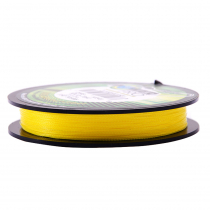 Why pay $31.99FROM $21.99SAVE $10.00!
Why pay $31.99FROM $21.99SAVE $10.00!
-
Sufix Wind-On Premium Monofilament Leader
 Why pay $15.50FROM $11.50SAVE $4.00!
Why pay $15.50FROM $11.50SAVE $4.00! -
BKK SF8070 Jig Assist Hook
 Why pay $14.95FROM $11.50SAVE $3.45!
Why pay $14.95FROM $11.50SAVE $3.45! -
Black Magic Equalizer Set - Gimbal Belt and Harness
 Why pay $349.00FROM $329.00SAVE $20.00!
Why pay $349.00FROM $329.00SAVE $20.00! -
Black Magic 21 LED UV Torch
 Why pay $27.99ONLY $24.99SAVE $3.00!
Why pay $27.99ONLY $24.99SAVE $3.00!In Stock
-
Berkley Vanish Fluorocarbon Trace
 Why pay $19.99FROM $16.99SAVE $3.00!
Why pay $19.99FROM $16.99SAVE $3.00!In Stock
-
Daiwa X8 J-Braid Multi-Colour
 FROM $46.99
FROM $46.99In Stock
-
Rapala Multi Clipper with Lanyard
 Why pay $15.50ONLY $11.50SAVE $4.00!
Why pay $15.50ONLY $11.50SAVE $4.00!In Stock
-
Black Magic Tough Fluorocarbon Leader
 Why pay $32.99FROM $19.99SAVE $13.00!
Why pay $32.99FROM $19.99SAVE $13.00!In Stock


















